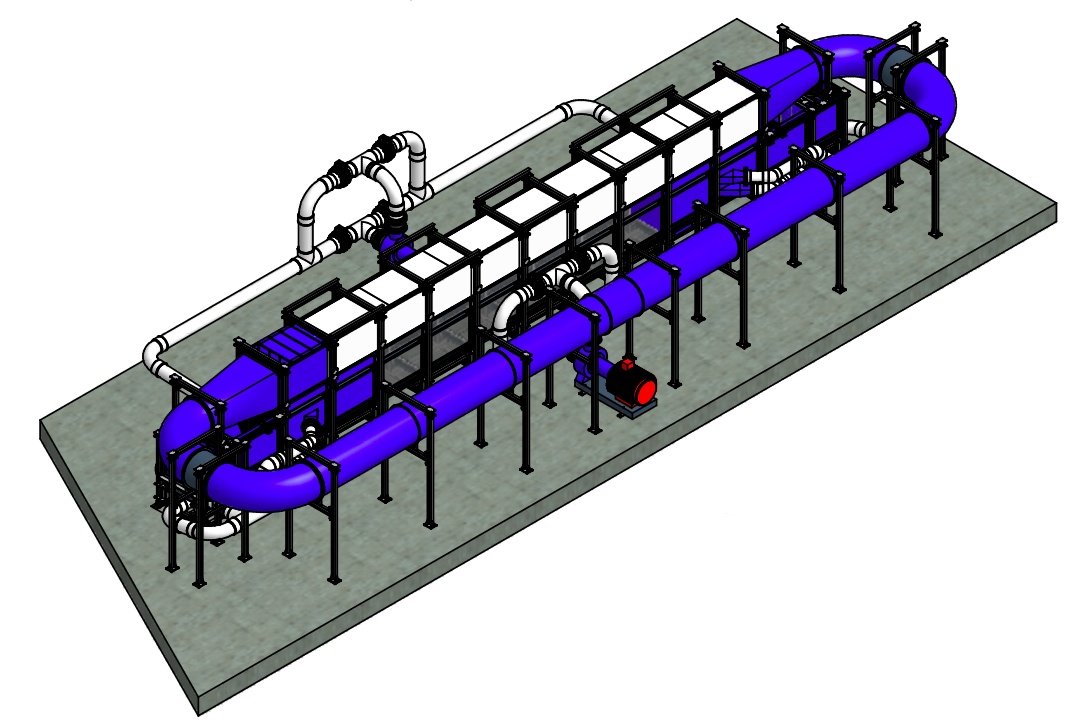- Physical modeling of wave-structure interaction, including behavior of breakwaters and coastal protection structures, wave energy generation devices, sediment transport and wave generation and propagation.
- Physical modeling of wave-wind-structure interaction, including wind-wave generation and wind-wave energy generation devices.
- Wave energy extraction and resources management.
Atmosphere-ocean interaction
Atmosphere-Ocean Interaction Flume
This facility is dedicated to the study of the coupling of processes between the ocean and the atmosphere. The air-sea exchange of energy, mass and momentum is particularly important and affects many scientific disciplines: climate forecast, wave breaking, cloud formation, hurricane forecast, statistical wave forecast, among others.
The flume has a length of 15 m, a width of 1 m and a depth of 0.8 m. It is equipped with:
- Wave generation
- Through wind generation
- Through wave paddles (upwind or downwind)
- Current generation (opposing and following currents)
- Wave breaking
- Rain generation
The wind generation system is a 24 m long closed circuit wind tunnel with the capacity to generate winds of up to 12 m/s.
The piston type wavemakers are equipped with an active wave absorption system. Therefore, unwanted re-reflections of waves can be avoided at the generating wave paddle and the secondary paddle can compensate for the reflected waves by measuring the propagated waves. The system allows the generation of regular and irregular waves, parametric or user-defined spectra, solitary waves and measured time series with wave periods from 1-5 seconds and wave heights up to 25 cm. The system allows the generation of waves following or opposing the wind direction.
The double currents generation system allows the generation currents at two heights with maximum current velocities of 0.75 m/s. It can generate currents in the following or opposing direction of wind.
All three main components (wind, waves, currents) are reversible and independent and therefore all the agents can be simulated propagating in the same or opposite direction providing the facility with a great amount of versatility.
The facility has also some auxiliary systems, which make it unique worldwide:
- A rainfall generator, from 75 to 300 mm/h, and with a variation of water temperature from 10º to 30ºC.
- A sediments trap, which allows sediment transport experiments.



